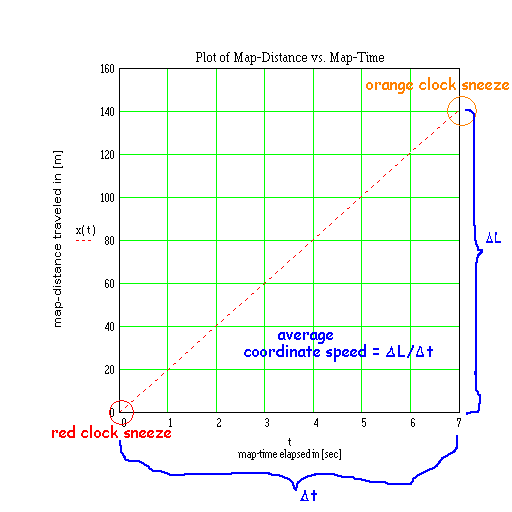
Discover it yourself: map-based motion at any speed
This page is one step in a personal journey to discover 20th century methods for describing motion.
Excellent choice (according to our sources)! You can obtain a coordinate velocity of 20.1 meters per second by dividing 141 meters of map-distance traveled, by 7 seconds of map-time elapsed between sneezes. Alternatively, you could have taken an airplane up over a plowed field, and flown repeatedly between stopwatch-equipped observers 141 meters apart, adjusting your speed by trial and error until THEIR TIMERS indicated map-time elapsed between observers to be 7 seconds. Then the speedometer reading (just over 45 miles per hour when you get it right, well over the stall speed for a 1940's TaylorCraft with wooden spar) would have given you the answer to click in getting here as well. The "theoretical" approach to this question is probably easier to pull off!
Although we have no details about velocity changes during this trip, graphing map-distance versus map-time would allow you to visualize such a trip in more detail. If we assume that the velocity of the aircraft was constant on the trip between observers, your graph might look like:

The link to the next challenge in this series, which asks a question that Minkowski may have been the first to answer correctly, will be placed HERE. Check back soon to find out where discover-it-yourself goes next...
If you would like further information at this point, send a note mentioning this web address to our staff. Thanks for visiting!
Number of "right-on" responses to the question that brought you here is  .
.
Send comments and/or complaints to pfraundorf@umsl.edu.
